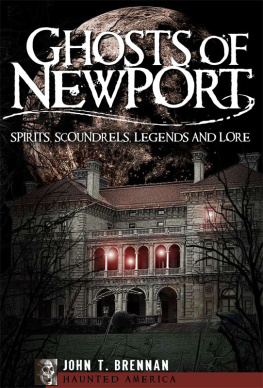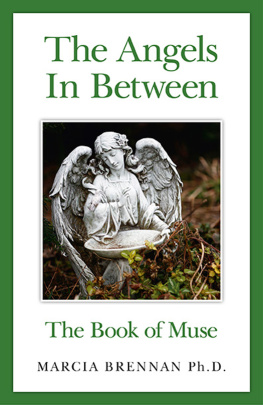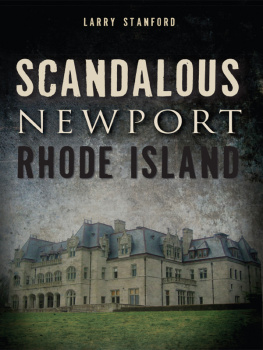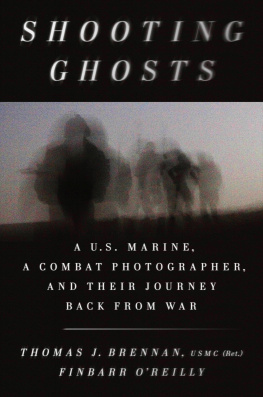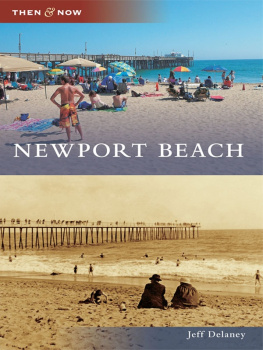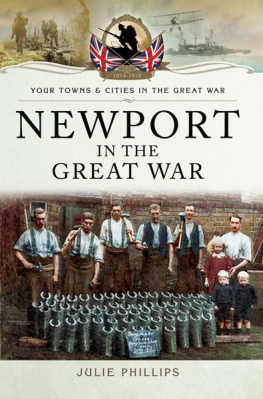Published by Haunted America
A Division of The History Press
Charleston, SC 29403
www.historypress.net
Copyright 2007 by John T. Brennan
All rights reserved
Cover image: Illustration featuring The Breakers by Marshall Hudson
All photographs by the author.
First published 2007; Second printing 2008; Third printing 2009; Fourth printing 2009;
Fifth printing 2010; Sixth printing 2011
e-book edition 2012
ISBN 978.1.61423.361.9
Library of Congress Cataloging-in-Publication Data
Brennan, J. T. (John T.)
Ghosts of Newport : spirits, scoundrels, legends and lore / J.T. Brennan.
p. cm.
print edition ISBN-13: 978-1-59629-335-9 (alk. paper)
1. Tales--Rhode Island--Newport. 2. Ghosts--Rhode Island--Newport. 3.
Newport (R.I.)--Folklore. 4. Newport (R.I.)--History. I. Title.
GR110.R4B74 2007
398.2097457--dc22
2007025647
Notice: The information in this book is true and complete to the best of our knowledge. It is offered without guarantee on the part of the author or The History Press. The author and The History Press disclaim all liability in connection with the use of this book.
All rights reserved. No part of this book may be reproduced or transmitted in any form whatsoever without prior written permission from the publisher except in the case of brief quotations embodied in critical articles and reviews.
ACKNOWLEDGEMENTS
Without passion, its only wind and water.
Mariners Memorial, Newport
There are so many people that deserve my gratitude; I cannot thank them all. Many people assisted me with stories. They opened their doors to me and shared their secrets. Without their openness, there would be no book.
Thanks to Melissa Schwefel and the folks at The History Press, who believed in this before it was even born, who walked me through the process and who were patient with me as I stumbled blindly in the woods.
Thanks to friends and co-workers who helped me juggle my crazy schedule to produce a book that I hope is of the highest quality. Id especially like to thank Rick and Chris Bagley, Carol McLaughlin, Darleen Scherer, Kate Wheeler, Ginny Carico, Matthew Condon, Matthew Burke, Michael Moran, David Zatz and John Nelson.
Thanks to my wonderful family, who have always encouraged me to excel in all my endeavors. My father, John, and my mother, Lorraine, have given me so much throughout my life that words could never fully express how deeply I love, admire and respect you both. My brother, Dave, and sister, Dawn, have been friends as well as siblings and our special bond will never be broken. I love you and appreciate all youve done for me.
Most of all, Id like to thank my wife, Michelle and my children, Michael, Mackenzie and Bailey. Thanks for your love, support and patience. I love you.
ONE
PRUDENCE, PATIENCE, HOPE AND DESPAIR
B OUND BY THE S EA
Tis now the very witching time of night, When churchyards yawn and hell itself breathes out Contagion to this world.
William Shakespeare
Today, Newport maintains a strong tourism industry, a vibrant arts community and a remarkable culture. Local delicacies include quahogs (a species of clam), clam cakes (clams deep-fried in a batter), stuffies (stuffed clams), johnnycakes (thin, crunchy cornmeal pancakes) and coffee milk (coffee syrup mixed with milk). The local dialect is so distinct that there have even been Rhode Island-to-English dictionaries published. It is fiercely independent, perhaps due to its amazing past.
Newports history is one of paradox; well known as a seat of power and wealth, it is also notorious for its crime and poverty. The two have gone hand in hand in Newport since its inception in 1639 and continue to this very day. Wealth and power built the city, violence and crime defined it and poverty has preserved it. Newports well-preserved and tumultuous past is perfectly suited for ghosts and spirits. Newports historic legacy begins with the political forces at work in the seventeenth century.
The founding colony at Massachusetts is perhaps one of the best known. The Puritans, our history books tell us, came to the New World aboard the Mayflower in search of religious freedom. This is not entirely truethe Puritans were, well, puritanical and intolerant. Those whose beliefs did not meet the exacting standards of the community were exiled or executed.
By 1636, there was a great deal of dissent within the colony. Unable to reconcile themselves with strict Puritan beliefs, several colonists chose exile over execution. Roger Williams was banished and settled to the south, in an area he called Providence Plantations. Two years later, in 1638, more dissenters were banished. They created a settlement on the north end of the island, called Aquidneck by the local Narragansetts. The settlers purchased the island from the Narragansetts and renamed it Rhode Island.
Hanging in the Redwood Library is the first flag of colonial Rhode Island, presented to Governor Benedict Arnold in 1663 and used until the evacuation of the British in 1779.
In 1639, William Coddington and Nicholas Easton migrated southward from Portsmouth and founded Newport on the southern end of the island. Strongly believing in freedom of religion, they codified Newports laws in the Newport Town Statutes of 1641, thereby creating one of the worlds first secular democracies. By 1663, Rhode Island and Providence Plantations were united into one colony. The Royal Charter of 1663 was granted to Rhode Island to hold forth a lively experiment, that a flourishing and civil state may standwith a full liberty in religious commitments. No person was to be molested, punished, disquieted, or called in question, for any difference in opinion in matters of religion. In fact, Rhode Island was the last of the original colonies to ratify the Constitution, specifically because there was not a guarantee of religious freedom. Thus, its motto became First in war; Last in peace.
Newport became the capital of the new colony. Its liberal stance attracted a diverse population of individuals who had been persecuted in other colonies. Its deep, well-protected harbor attracted merchants and sailors with a deep sense of independence. The city quickly grew into the fifth-largest city in the New World. Wealth came pouring into Newport, mostly through the slave trade.
Newport became a massive rum producer, with an estimated seventy rum distilleries in the city. Rum was shipped to Africa and traded for slaves. The slaves were brought to the Caribbean and traded for molasses. The molasses was brought back to Newport and distilled into rum. The infamous Triangular Trade could net a captain up to a 900 percent profit. Newport thrived.
The British Empire had many enemiesDutch, French, Spanish and so on. In order to combat them, the colonies were allowed to dispense privateer licenses. Privateers could legally attack and plunder enemy vessels. Newport became liberal in issuing privateer licenses and many of its most influential citizens made their fortunes as privateers.
Privateering was a lucrative occupation, but could be more lucrative still if a captain chose not to limit himself to enemy vessels. Doing so was the difference between being a licensed privateer and an outright pirate. Indeed, many Newporters turned to piracy. Pirates in Newport made so much profit that local laws were written to make prosecution of pirates virtually impossible. Laws were carefully worded so that a pirate was defined as a person actively engaged in piracy. In other words, once the deed was done, the culprit could no longer be considered a pirate by law. Accordingly, nobody in Newport was convicted of piracy until the height of the British Admiraltys anti-pirate campaign in 1723.





